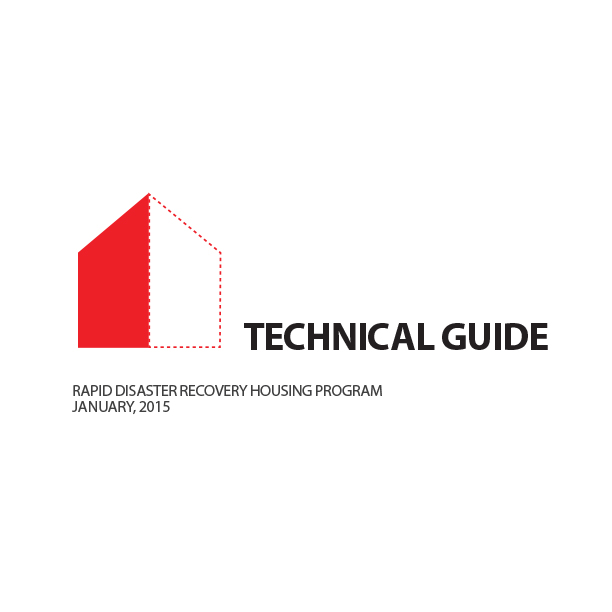DiSASTER RECOVERY HOUSING
The Disaster Recovery Housing report consists of three documents: a set of policy recommendations that outline high level policy changes, a technical guide that serves as a step-by-step manual for local jurisdictions who adopt the program, and a program comparison report that details post disaster housing pilot programs and common challenges.
INTRODUCTION
In 2008, the Lower Rio Grande Valley experienced major devastation at the hand of hurricanes Dolly and Ike. Wind and flood damage in the four county area topped 1 billion dollars; however, in 2013 hundreds of families were still living in homes with flood and wind damage, ultimately triggering a second round of disaster recovery. The purpose of the DRH program is to develop a system that would be able to respond to housing recovery faster, cheaper, and with greater choice. The program utilized the innovative temporary-to-permanent design tested in the RAPIDO pilot to rehouse families affected by a disaster within 120 days of disaster response.
POLICY RECOMMENDATIONS
The Policy Recommendations give an overarching view of the lessons learned from both the RAPIDO Demonstration Project as well as our findings from a comparison of other reports completed after similar disasters across the Gulf and Atlantic Coasts. It includes general recommendations for improving disaster housing recovery processes for home owners, primarily at the state and local level, as well as more specific recommendations in each of the major areas of work (education, navigation, and design and construction). The intended audience is federal, state, and local policy makers.
technical guide
The Technical Guide supports the Policy Recommendations, offering greater detail on a proposed administrative structure, but more importantly, the Technical Guide serves as a step-by-step guide to adopting and administering the Disaster Recovery Housing program. The intent of the Technical Guide is to allow other users to replicate the program. It is structured so that professionals involved in the execution of such a program can both discover the steps they need to take, but also understand how their parts fit into the whole of the program.
PROGRAM COMPARISON REPORT
The Program Comparison Report serves as an appendix of sorts and includes materials that underlie the actions recommended in the Policy Recommendations and undertaken in the Technical Guide. The Program Comparison Report was generated by identifying post-disaster reports for every hurricane that has struck the Gulf and Atlantic Coasts since 2005 (including Katrina and Rita). This yielded forty (40) reports and articles, most of which covered only pieces of the recovery effort (case management, design, construction, etc.) These documents were systematically compared to one another to develop an understanding of issues and obstacles that have arisen repeatedly across comparable disasters as well as issues that may be more context-dependent.



